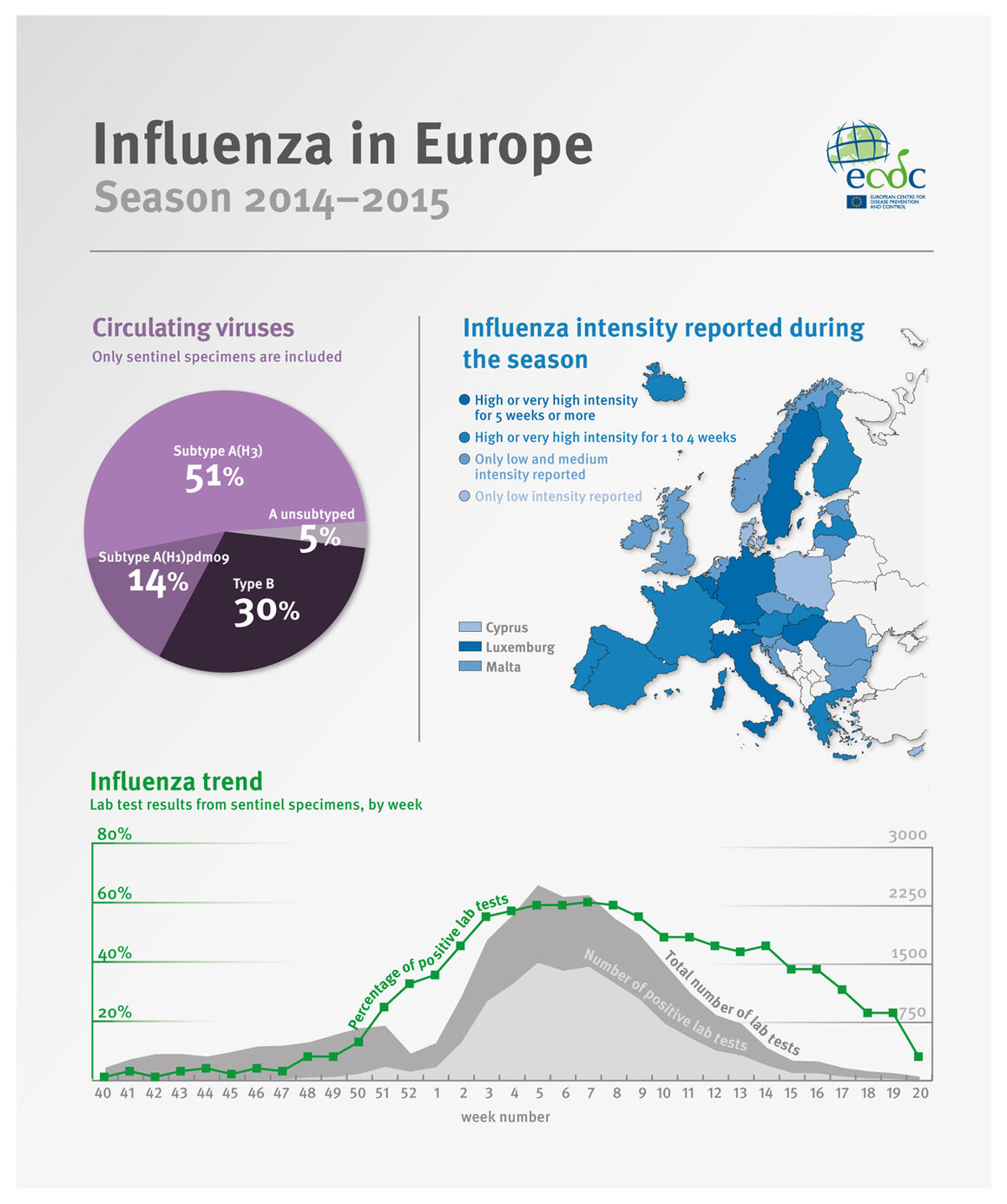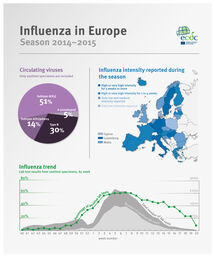Summary of the influenza 2014–2015 season in Europe
Increased influenza activity started in week 51/2014 this season when the percentage of influenza positive laboratory tests crossed the 10% threshold. The season lasted for 21 weeks until week 19/2015, when the positivity rate dropped below 10%. The peak of the season - with the highest proportion of specimens tested positive (55%) - occurred in week 07/2015. The peak varied between countries, occurring in week 04/2015 in Bulgaria and Portugal, and between weeks 05/2015 and 08/2015 in most central European countries.

Download

Influenza in Europe, summary of the season 2014–15
Season’s dynamics
Increased influenza activity started in week 51/2014 this season when the percentage of influenza positive laboratory tests crossed the 10% threshold. The season lasted for 21 weeks until week 19/2015, when the positivity rate dropped below 10%.
The peak of the season - with the highest proportion of specimens tested positive (55%) - occurred in week 07/2015. The peak varied between countries, occurring in week 04/2015 in Bulgaria and Portugal, and between weeks 05/2015 and 08/2015 in most central European countries.
Circulating viruses and antigenic drift in A(H3N2) strain
During the season, influenza A(H1N1)pdm09, A(H3N2) and type B viruses circulated, with A(H3N2) being the dominant strain that accounted for over 50% of all virus detections. Of the H3N2 viruses that were further analysed, due to an antigenic drift, 71% were dissimilar to the vaccine strain, indicating to limited effectiveness of the (H3N2) component of this season’s influenza vaccines. The A(H1N1)pdm09 and B components in the vaccine were likely to protect against the circulating viruses.
Increased all-cause mortality during the season
In parallel with increase influenza activity and predominance of A(H3N2) viruses, excess all-cause mortality among people aged 65 years and above was observed in most countries participating in the European monitoring excess mortality for public health action (EuroMOMO).
Data on hospitalisations in reporting countries
In the eight EU countries reporting hospital data, 6023 hospitalised cases of influenza were reported this season, with over half of those admitted to intensive care units. Since week 40/2014, 584 deaths have been reported among laboratory-confirmed hospitalized cases, mostly from France (241) and Spain (252).







